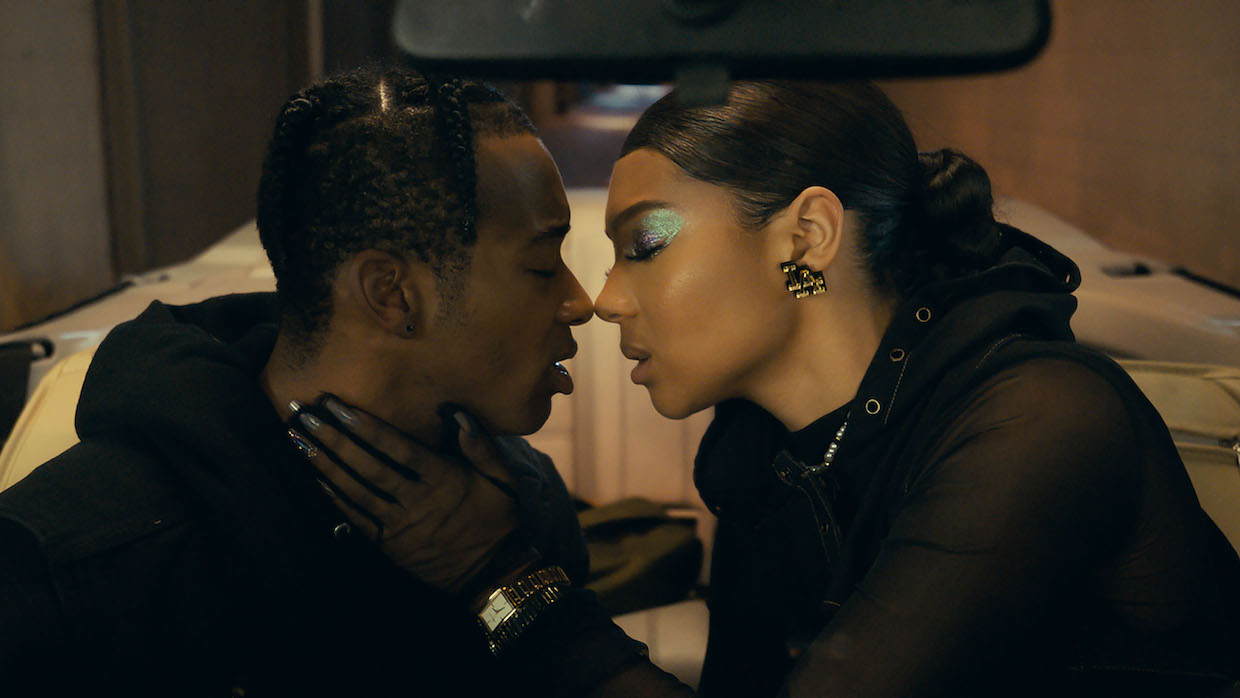 Back to selection
Back to selection
“With Each Interior Location We Had a Distinct Color Palette”: DP Cary Lalonde on Young. Wild. Free.
 Young. Wild. Free., courtesy of Sundance Institute.
Young. Wild. Free., courtesy of Sundance Institute. Teenage lovers Brandon (Algee Smith) and Cassidy (Sierra Capri) embark on dangerous but lust-fueled journey in Young. Wild. Free., the feature debut from director Thembi Banks. Cinematographer Cary Lalonde tells Filmmaker about shooting this modern day take on Bonnie and Clyde.
See all responses to our annual Sundance cinematographer interviews here.
Filmmaker: How and why did you wind up being the cinematographer of your film? What were the factors and attributes that led to your being hired for this job?
Lalonde: The project was initially shut down after one day of shooting in the early days of COVID. Once it was back up, Patrick Stapleton our UPM was one of the new people that joined the project and called me to see if I would be interested. Interviewing with Thembi and the producers, I shared some visuals that reflected the direction I thought would be good for the film, and though our Zoom kept going haywire, luckily Thembi thought I was the DOP for her film.
Filmmaker: What were your artistic goals on this film, and how did you realize them? How did you want your cinematography to enhance the film’s storytelling and treatment of its characters?
Lalonde: My artistic goal for this film was to complement the story while not over shadowing the narrative with over-the-top colors or distracting camera movement. I want the audience to feel the emotion from the performances our cast delivers. The film is such a great character piece, I didn’t want to get in the way of the words. I wanted a natural look and feel to the film as though the audience was there with our characters. Our opening scene accomplished this with clean close-ups direct to the camera as though the viewer is sitting across the table from our actors. This framing technique gives a real intimacy to start our film.
Beyond this, with each interior location we had a distinct color palette, giving a tone and texture specific to each character. For example, for our main character’s home we kept a look and tone more planted in reality, juxtaposed with the love interest’s home where we used a more poppy, saturated color palette.
Filmmaker: Were there any specific influences on your cinematography, whether they be other films, or visual art, or photography, or something else?
Lalonde: I’ve always loved Kieslowski’s Three Colours Trilogy. The beauty, the simplicity, and the differing perspectives have stuck with me through time. The way life is such a shared experience, if not initially obvious, and how there are layers upon layers of interconnected strands that bring our shared existence together. These three films were the reason I wanted to tell stories through film.
Filmmaker: What were the biggest challenges posed by production to those goals?
Lalonde: There are always challenges with all filmmaking, time, budget, sunlight, etc… But we were very fortunate with our production team. Rather than starting with a “no,” it was, let’s see if we can make it work, and if that can’t, let’s try another way. Also, we worked hard in pre-production to choose locations that worked creatively but would also work efficiently.
Filmmaker: What camera did you shoot on? Why did you choose the camera that you did? What lenses did you use?
Lalonde: We used Mini LF’s 4.5K Arriraw with Panavision Panaspeed PV70 prime lenses. The PV70’s paired with the Mini LF gave fantastic detail in both the highlights and low end of the image. The high and low detail combined with the film emulsion LUT resulted in beautiful images and fantastic skin tones.
Filmmaker: Describe your approach to lighting.
Lalonde: When possible, I prefer to light the environment and give the actors the freedom to encompass the space. Working with my gaffer, Justin Garcia, and his crew we were able to take challenging real locations and transform them into almost painting-like environments.
Filmmaker: What was the most difficult scene to realize and why? And how did you do it?
Lalonde: The most difficult scene was when our lead was tracking through multiple locations at the same time. We had to choreograph the movement of the actors/camera and lighting to flow with each step from one location to another. We accomplished this with stitched pans through fixed verticals, doors opening and closing, whip pans. and some green screen to hide the transitions.
Filmmaker: Finally, describe the finishing of the film. How much of your look was “baked in” versus realized in the DI?
Lalonde: We used a film emulsion LUT as our baked in look while we shot. The LUT gave the film a richness and specificity in the dailies that made us want to preserve that look in the DI. We used CO3 for our DI with Walter Volpatto as our colorist, and we added some grain as we performed the usual magic of vignette and some secondaries to fix some sins to bring the film together. And a shout out to what I learned from sitting with Tom Sigel in the DI suite after long days on set; the DI is an essential tool to enhance your storytelling.
TECH BOX
Film Title: Young. Wild. Free.
Camera: Mini LF 4.5K Arriraw 2:39
Lenses: Panavision Panaspeeds Prime lenses
Lighting: Arri Max S30, S60’s, Astera Tubes
Processing: Arriraw
Color Grading: CO3 Davinci Resolve 18
